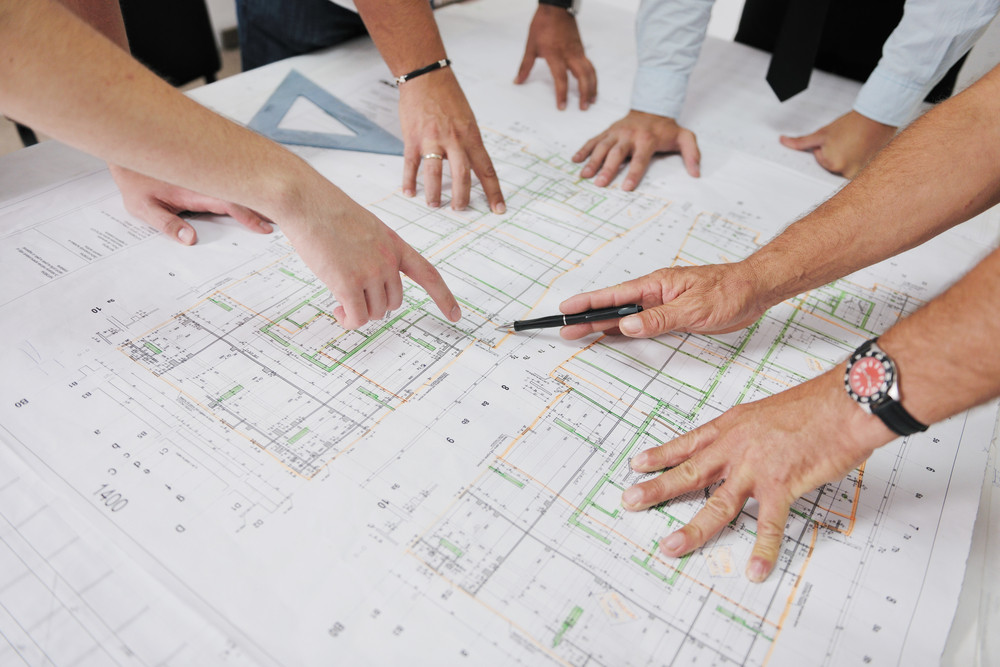The typical U.S. methods of building involve several teams of individuals who operate under different procedures, creating inefficiency in the building process. A transformative process, called design-build uses a different approach, one that uses a single team functioning under one set of operating procedures that designs, engineers, and then builds a structure. The design-build concept comes from manufacturing and bears some resemblance to the military and government process of commissioned building construction. It has yet to overtake the building industry though, and this article explores why.
Traditional Building Methods
Using traditional means, a consumer hires an architect to design the building. After completing plans that the consumer deems suitable, the architect has an independent engineering business examine the plans and certify that they meet building codes and safety standards. Finally, the consumer hires a general contractor or building contractor to construct the building. This method proves inefficient and ineffective in building sustainable architecture.
The Commissioned Building Process
The government process of commissioning buildings uses a more suitable method, that, according to the Department of Energy, results in structures with operating costs of 8% to 20% lower than a non-commissioned building. The commissioning process provides stringent standards for the building and required specifics for its design. The builders have no leeway and must use the best quality materials for the job.
The Design-Build Process
The design-build process integrates all activities into one company. The architect, engineers, and construction professionals all work for the same team. Projects by a design-build team typically cost less money to build and take less time to build. They also reduce risk by eliminating plan errors.
Municipal Choices
Throughout the U.S., municipalities have a choice between traditional, commissioned, and design-build methods. Choosing design-build could result in a better use of the $1 trillion infrastructure spending bill that the U.S. Congress passed in November 2021. Besides design-build, the government has many other options for saving money on its building and infrastructure projects.
Requiring construction companies to use the best practices available can result in cost savings. For example, according to the Demolition Association, today’s demolition professionals recycle more than 90% of a building. A project that requires the demolition of one building to make room for the construction of another can recoup materials through recycling.
Why Not Always Use Design Build?
Like other areas of life, it takes time to break with tradition. The construction industry has functioned one way for centuries. The modern method of design-build has made strides in entering into the typical process, but it has yet to transform the construction culture.
The military and government prefer commissioned buildings but frequently use the traditional process for infrastructure, such as roads. Switching to a design-build method could provide more efficient projects and reduce government spending. At present, design-build only wins the day when the project includes few stakeholders. When a project involves many stakeholders, the design-build process does not work effectively because it cannot use the most efficient methods.
Transforming Construction to Use Effective Methods
Design-build works for many projects with its efficient methodology, resulting in designs that meet client needs and a quick building process. For it to take over in the construction industry as the main form of building, it needs to develop a way to integrate stakeholder input into building design. Road projects, especially, can involve many neighborhoods and communities, requiring ample local meetings to assess concerns and meet needs. Currently, it offers the ideal methods for the construction of military or government buildings that do not impact stakeholders, such as on-base construction that consists only of military inputs to meet military needs.

